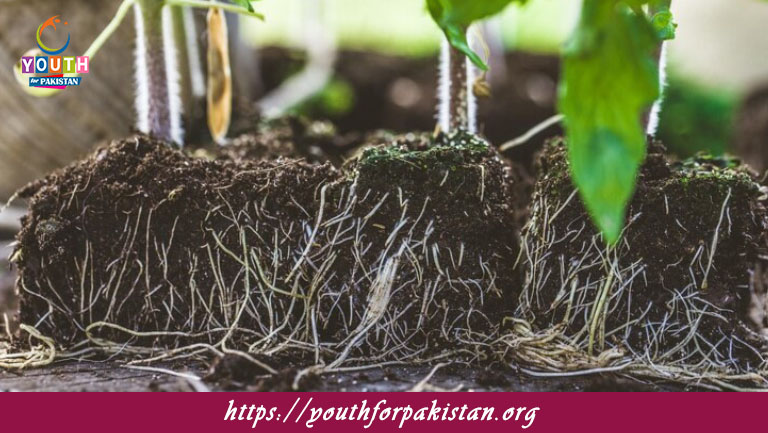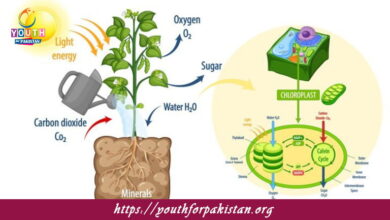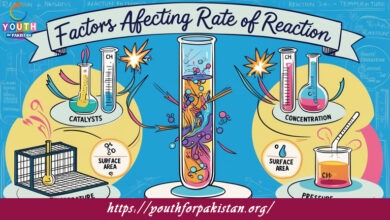Osmotic Pressure/Potential MDCAT MCQs with Answers

Welcome to the Osmotic Pressure/Potential MDCAT MCQs with Answers. In this post, we have shared Osmotic Pressure/Potential Multiple Choice Questions and Answers for PMC MDCAT 2024. Each question in MDCAT Biology offers a chance to enhance your knowledge regarding Osmotic Pressure/Potential MCQs in this MDCAT Online Test.
What is osmotic pressure?
a) The pressure exerted by the solute on the membrane
b) The pressure required to prevent the flow of water across a semipermeable membrane
c) The pressure of the solvent on the solute
d) The pressure within a cell wall
Which term describes the measure of the tendency of water to move into a solution by osmosis?
a) Osmotic pressure
b) Osmotic potential
c) Hydrostatic pressure
d) Turgor pressure
What happens to osmotic pressure when the concentration of solute increases?
a) It decreases
b) It remains constant
c) It increases
d) It fluctuates
In a hypertonic solution, the osmotic pressure is __________ compared to the inside of a cell.
a) Lower
b) Higher
c) Equal
d) Unpredictable
What is the relationship between osmotic potential and osmotic pressure?
a) They are inversely proportional
b) They are directly proportional
c) Osmotic potential is the same as osmotic pressure
d) Osmotic potential affects osmotic pressure only in hypertonic solutions
Which of the following has the highest osmotic pressure?
a) Pure water
b) A dilute salt solution
c) A concentrated salt solution
d) A sugar solution with low concentration
What effect does increasing the temperature have on osmotic pressure?
a) It decreases osmotic pressure
b) It has no effect on osmotic pressure
c) It increases osmotic pressure
d) It makes osmotic pressure fluctuate
Which of the following solutions is isotonic to a cell?
a) Solution with lower osmotic pressure than the cell
b) Solution with higher osmotic pressure than the cell
c) Solution with the same osmotic pressure as the cell
d) Solution with no solutes
Osmotic potential is measured in which of the following units?
a) Atmospheres
b) Pascals
c) Millimeters of mercury
d) Moles per liter
In a hypotonic solution, what happens to the osmotic pressure inside the cell?
a) It decreases
b) It increases
c) It remains the same
d) It becomes zero
Which of the following statements is true about osmotic potential?
a) It is always positive
b) It is always negative
c) It can be positive or negative
d) It can be zero
How does osmotic pressure affect the direction of water movement?
a) Water moves from high to low osmotic pressure
b) Water moves from low to high osmotic pressure
c) Water movement is not affected by osmotic pressure
d) Water moves towards areas with no osmotic pressure
Which process involves the movement of water through a semipermeable membrane from a region of lower osmotic pressure to a region of higher osmotic pressure?
a) Active transport
b) Diffusion
c) Osmosis
d) Filtration
If a cell is placed in a solution with higher osmotic pressure than its internal pressure, what will happen?
a) Water will enter the cell
b) Water will leave the cell
c) The cell will remain unchanged
d) The cell will burst
Which of the following statements about osmotic pressure is correct?
a) Osmotic pressure is independent of solute concentration
b) Osmotic pressure increases with increasing solute concentration
c) Osmotic pressure decreases with increasing temperature
d) Osmotic pressure is not affected by temperature
What is the effect of adding a solute to pure water on osmotic potential?
a) It becomes more positive
b) It becomes less negative
c) It becomes more negative
d) It remains the same
In which type of solution does a cell become turgid?
a) Isotonic solution
b) Hypotonic solution
c) Hypertonic solution
d) Saturated solution
Which of the following best describes osmotic potential in a plant cell?
a) The ability of a cell to absorb water through osmosis
b) The pressure exerted by the cell wall on the cell contents
c) The force driving water out of the cell
d) The concentration of solutes inside the cell
When a cell is placed in a hypertonic solution, what happens to its osmotic potential?
a) It increases
b) It decreases
c) It stays the same
d) It becomes zero
What is the term used to describe the pressure within a plant cell caused by the uptake of water?
a) Osmotic pressure
b) Turgor pressure
c) Hydrostatic pressure
d) Diffusion pressure
Which of the following conditions results in the highest osmotic pressure?
a) A solution with low solute concentration
b) A solution with moderate solute concentration
c) A solution with high solute concentration
d) Pure water
In a plant cell, what role does the cell wall play in relation to osmotic pressure?
a) It resists osmotic pressure and prevents excessive water uptake
b) It facilitates the entry of water
c) It has no effect on osmotic pressure
d) It increases osmotic pressure
Which solution would result in the lowest osmotic pressure?
a) Pure water
b) 0.1 M salt solution
c) 0.5 M salt solution
d) 1.0 M salt solution
What effect does an increase in solute concentration have on osmotic potential?
a) Osmotic potential increases
b) Osmotic potential decreases
c) Osmotic potential remains the same
d) Osmotic potential fluctuates
How is osmotic pressure related to the water potential of a solution?
a) Osmotic pressure is the negative component of water potential
b) Osmotic pressure is the positive component of water potential
c) Osmotic pressure is equal to water potential
d) Osmotic pressure does not affect water potential
What happens to osmotic pressure when a semipermeable membrane is used to separate two solutions of different concentrations?
a) The osmotic pressure increases on the side with higher solute concentration
b) The osmotic pressure decreases on the side with higher solute concentration
c) The osmotic pressure remains the same on both sides
d) Osmotic pressure is unaffected by the semipermeable membrane
Which of the following scenarios would lead to an increase in osmotic pressure in a cell?
a) Adding a dilute solution to the cell
b) Placing the cell in a hypertonic solution
c) Placing the cell in a hypotonic solution
d) Removing solutes from the cell
In an osmotic experiment, if water moves into a cell, what can be inferred about the osmotic pressure of the cell’s environment?
a) The environment has higher osmotic pressure than the cell
b) The environment has lower osmotic pressure than the cell
c) The osmotic pressure is the same inside and outside the cell
d) The osmotic pressure is zero outside the cell
What term describes the pressure exerted by a solution that can prevent the flow of water through a semipermeable membrane?
a) Hydrostatic pressure
b) Osmotic pressure
c) Turgor pressure
d) Vapor pressure
Which factor directly affects osmotic pressure?
a) Temperature
b) Solute concentration
c) Solvent density
d) Solution color
If a plant cell is placed in a solution with lower osmotic pressure than its internal pressure, what will likely occur?
a) The cell will become turgid
b) The cell will become plasmolyzed
c) The cell will remain unchanged
d) The cell will burst
What happens to osmotic pressure if the solute concentration in a solution is doubled?
a) Osmotic pressure remains the same
b) Osmotic pressure doubles
c) Osmotic pressure halves
d) Osmotic pressure decreases
How does a semipermeable membrane influence osmotic pressure?
a) It increases osmotic pressure
b) It decreases osmotic pressure
c) It allows the measurement of osmotic pressure
d) It has no effect on osmotic pressure
Which solution is hypertonic to a cell?
a) Solution with lower solute concentration than the cell
b) Solution with the same solute concentration as the cell
c) Solution with higher solute concentration than the cell
d) Pure water
What happens to osmotic potential when a cell is placed in a hypertonic solution?
a) Osmotic potential becomes more positive
b) Osmotic potential becomes more negative
c) Osmotic potential remains unchanged
d) Osmotic potential becomes zero
What is the primary effect of osmotic pressure on plant cells?
a) It prevents water loss
b) It causes water to enter the cell, increasing turgor pressure
c) It allows water to exit the cell
d) It dissolves solutes in the cell
In which condition would a cell’s osmotic pressure be highest?
a) In a hypotonic solution
b) In an isotonic solution
c) In a hypertonic solution
d) In pure water
If the osmotic potential of a solution is -0.5 MPa, what is the osmotic pressure of the solution?
a) 0.5 MPa
b) -0.5 MPa
c) 1.0 MPa
d) -1.0 MPa
What does a negative osmotic potential indicate about a solution?
a) It has a high concentration of solutes
b) It has a low concentration of solutes
c) It is isotonic to the cell
d) It is hypotonic to the cell
If you are interested to enhance your knowledge regarding Physics, Chemistry, Computer, and Biology please click on the link of each category, you will be redirected to dedicated website for each category.





